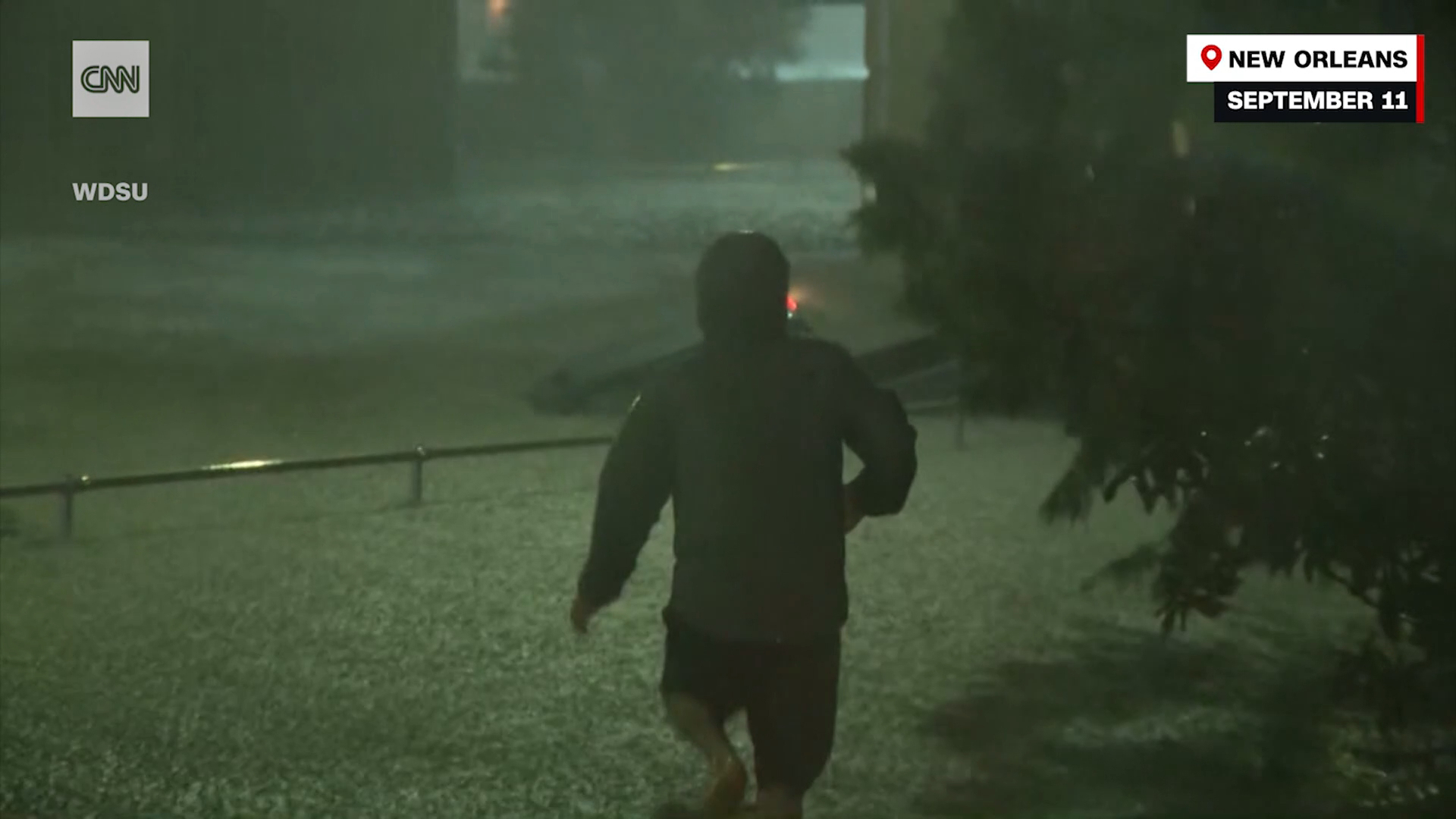
Miles Crawford was standing outside his home watching Hurricane Francine pound New Orleans with torrential rainfall and gusty winds when he noticed police activity.
A text from Crawford’s brother alerted him that someone had driven into rising floodwaters nearby.
Crawford, a registered nurse with the University Medical Center New Orleans, did the only thing he could think of: act.
READ MORE: NATO will be ‘at war with Russia’ if Ukraine uses Western missiles: Putin
“I put my boots on and went out there to see if they (the police on scene) needed any help,” Crawford told CNN.
He found police assessing a flooded vehicle from a distance.
But it wasn’t empty – a person was trapped inside with water already reaching their neck.
Crews on scene were wary of the danger the flooded road posed, but Crawford took action even after being told it wasn’t safe.
“Something needed to be done and something quick,” Crawford explained.
“I made a game time decision,” Crawford continued.
“I went and grabbed a hammer at my house.”
Crawford returned to the chest-high floodwater and used the hammer to break a window in the back of the vehicle.
The occupant was able to move from the front seat and escape from the back.
After a brief stumble in the chest deep floodwaters, Crawford and the person he saved without a second thought navigated to safety.
Crawford credited his training at University Medical Center for his fearlessness and drive to help others.
“We’re used to acting swiftly to do what needs to be done to save lives,” Crawford said.
“Anybody behind those doors would’ve done the same thing. I just happened to be in the right place at the right time.”
Hurricane Francine’s toll
Hurricane Francine is spreading dangerous conditions across the southern United States today, after it slammed into Louisiana with extreme rainfall, life-threatening flooding and destructive winds that knocked out power to hundreds of thousands
Francine made landfall in Terrebonne Parish as a Category 2 hurricane late on Wednesday afternoon (Thursday AEST) and weakened to a tropical depression on Thursday morning as it tracked into the South.
The wind risk is lessening, but the system will keep dropping flooding rainfall over the South, where more than 10 million people are still under flood alerts.
READ MORE: Child fighting for life after being struck by ute in Adelaide driveway
A level three out of four risk of flooding rainfall is in place for part of Alabama today while a widespread level two out of four risk stretches from Arkansas and Tennessee to southwest Georgia and the Florida Panhandle.
Flooding has been reported at 350 structures in Louisiana’s St Charles Parish, a parish spokesperson, Francesca Holt Blanchard, told CNN today.
“Our Department of Planning and Zoning is working with residents to confirm that the flooding is inside the home’s living space and not in a garage or carport,” Holt Blanchard said.
In neighbouring Jefferson Parish, more than 50 homes in the city of Kenner took on water during the storm, according to a city spokesperson.
At least eight properties in nearby Lafourche Parish were damaged, the parish said in a statement, but officials expect that number to increase as crews survey the damage left behind.
Flood emergency and water rescues in Louisiana
Francine brought more than a month’s worth of rain to New Orleans in a matter of hours.
Between 15 and 20 centimetres of rain deluged the area and triggered a rare flash flood emergency – the most severe flood alert – on Wednesday night local time, according to the National Weather Service.
Heavy rain flooded roadways and cut off travel routes in other parishes.
READ MORE: Western Bulldogs appeal abuse survivor’s record $5.9 million payout
Deputies in Lafourche Parish sprang into action to rescue 26 residents trapped in flooded homes, according to a statement from the sheriff’s office.
At least 8 to 10 centimetres of rain soaked the area.
Francine also churned water into homes in St. James Parish, officials said.
And in Jefferson Parish, officials urged households to limit their water usage through Thursday evening as the parish’s large and aging sewer system became overwhelmed by storm runoff.
Officials expect the system to be operational sometime Friday.
Hundreds of thousands without power
Power outages slowly started to decrease as a little over 290,000 homes and businesses were without power on Thursday evening in Louisiana, Mississippi and Alabama after Francine’s strong winds and heavy rain pummeled the region.
Wind gusts of 100 to 128kmph pounded south-central and southeast Louisiana as Francine pushed through the state on Wednesday evening (Thursday AEST).
These winds downed trees and power lines.
A state trooper who was cleaning up downed trees near Gonzalez, Louisiana, suffered a minor injury after being struck by a tree.
Francine’s last second burst before landfall
Francine looked like it would maintain strength through landfall as a strong Category 1 hurricane because it was battling storm-disrupting winds in the upper levels of the atmosphere.
But the atmosphere had other plans.
A trough – a weather feature in the atmosphere which can drum up those unfavorable winds – moving in from Texas actually briefly created a narrow window where those winds weren’t as strong creating a favorable window for intensification right before landfall.
This, along with extremely warm Gulf water, gave Francine the small push it needed to strengthen into a 160kmph Category 2 hurricane, Dan Brown, Branch Chief of the National Hurricane Center’s Hurricane Specialist Unit, explained.
links to content on ABC
9News





